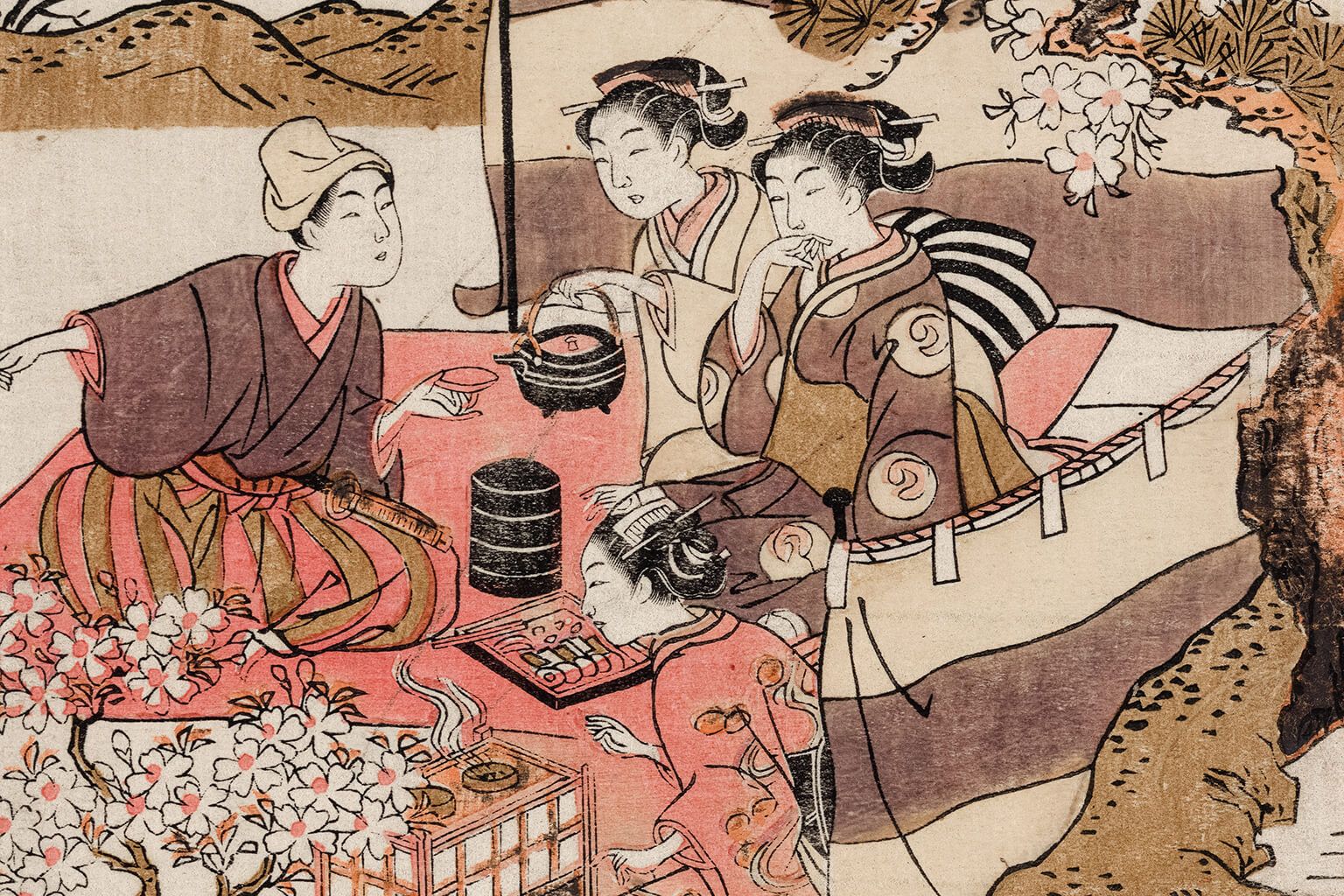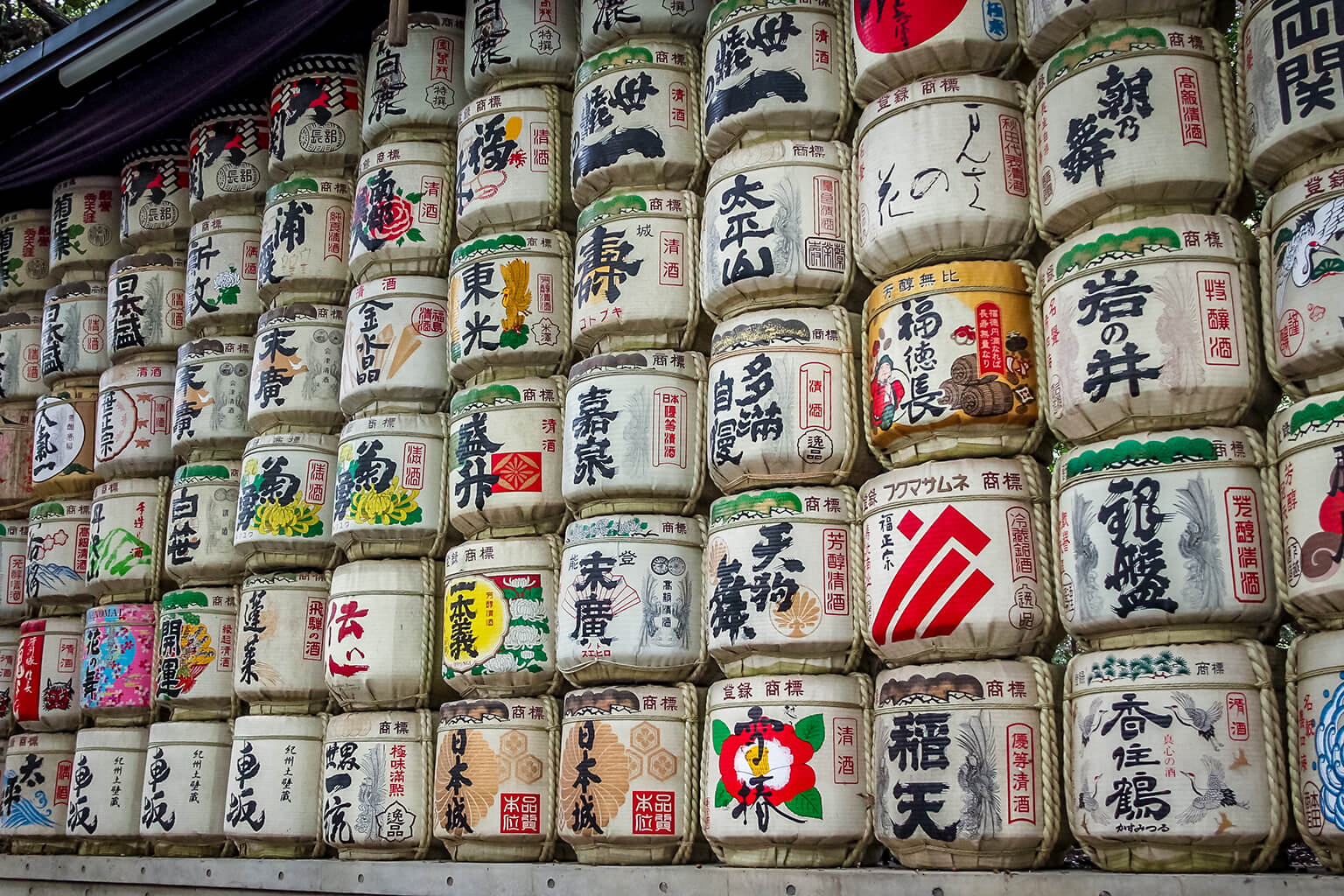What is a sake bomb? Explained plainly, it is a “shot” of sake and a pint of beer poured with room so that the sake can be dropped into the glass and consumed together. It is a common beverage found in sushi bars and Japanese restaurants across America. The sake bomb’s delivery can be quite the spectacle, sometimes followed by a loud ritual of banging prior to being gulped down in a matter of seconds.
Though sake bombs are popular in America, they can be polarizing to people familiar with sake. Sake bombs are often enjoyed by people looking for a fun way to consume alcohol in a Japanese-themed setting. Although the intention isn’t harmful, this commonly ordered drink undermines the craft of sake brewing and may also offend those with an appreciation for authentic Japanese culture. It also confuses sake, which is a brewed beverage with a relatively low ABV, for a distilled hard liquor.
This article will look further into the origin of the sake bomb, how they are most commonly enjoyed, and also propose some new alternatives that are more informed and respectful to sake and the culture surrounding it.
What is in a sake bomb?
A sake bomb consists of a partially full pint of Japanese beer (e.g. Sapporo, Kirin, Asahi) and a shot of sake (usually “futsushu,” or table sake). Most of the beers and sake used to make them are readily available and inexpensive, making this drink very appealing to many groups of people!
Outside of Japanese-themed restaurants, people might also be consuming sake bombs at college parties, karaoke bars and events where people are looking to have a fun, festive time. The flavor of sake bombs isn’t often noted, since the point is to drink them quickly. Drunk slowly, one may find that the flavor of the beer will overpower the sake and taste like a slightly more alcoholic beer, obscuring what sake truly tastes like.
The origin of the sake bomb
The sake bomb’s origins are not clearly known, but it is widely speculated that it originated around World War II with American soldiers. It has also been speculated that Japanese businessmen invented it while traveling in America by mimicking the popular boilermaker (beer and liquor cocktail) seen in bars. Regardless, sake bombs do not have the same level of popularity (if at all) in Japan as they do in the United States. The concept of sake bombs may actually be quite foreign and grotesque to some Japanese sake drinkers, especially because sake is Japan’s beloved national beverage.
Sake is meant to be drunk as a stand-alone beverage, similar to beer or wine. Sake is made deliberately and with intent, and requires lots of expertise and attention to detail from the “toji” (brewmaster) and the brewery. And though sake may have other purposes or applications, such as being an ingredient for cooking or mixing cocktails, that isn’t the original intention. It’s meant to be sipped slowly, drunk alone or paired with food. Hence, the sake bomb’s identity is much more American than it is Japanese!
How to do a sake bomb
How are sake bombs made? Well, the recipe is quite easy! Sake bombs are usually done with a ritual of placing chopsticks on top of a pint glass — filled half to three quarters of the way — and balancing the shot of sake on top. This is then followed with a ceremonious banging on tables until the sake drops into the beer, prompting those involved to quickly guzzle the beer and sake. Any sake can be used, but table sake or more affordable sake is most common, since the point isn’t to enjoy the sake as much as to drink it quickly.
4 reasons we don’t recommend sake bombs
Sake bombs may be enjoyable to some, as there is a time and place for everything. However, sake bombs aren’t advised for those who want a deeper appreciation for sake. The ritual may not be appropriate for some dining environments, as it can include loud banging on tables, leaving a mess of spilled beer and sake in its wake. The idea of sake bombs may even be offensive to craft sake fans, as it does not highlight any of the sake’s character or flavor. Sake bombs may be detrimental to the general public’s understanding of sake as well, as most people confuse sake for a hard liquor rather than a brewed beverage.
Sake is not liquor
One of the ways that sake bombs hurt the common perception of sake is that it misleads many people into believing it is a distilled spirit rather than a brewed beverage. This may even dissuade some people from being curious about sake, since it is mistaken for a harsh spirit with a flavor that needs to be masked and consumed quickly. In truth, the alcohol content of sake is much lower than a distilled spirit or liquor such as vodka or whiskey, and the taste is much smoother.
It may be offensive to those who love sake
Are sake bombs offensive? To those who have a deep appreciation of sake and the craft involved in creating it, yes. It is unlikely that most people partaking in sake bombs have an appreciation for the work of the toji, the quality of the water, rice, koji and yeast, or the regionality involved with said sake.
Appreciation of the craft aside, sake bombs may also be offensive in the way that they orientalize sake and disregard the long-standing culture of how to enjoy sake. The sake bomb’s identity is much more tied to the West than sake’s historically Japanese roots — which go back thousands of years, by the way! To some, the misunderstanding of sake culture and how to drink and serve sake may seem disrespectful and rude. Learn more about some featured tojis and breweries with our Spotlight Series!
Hangover
Some people claim to experience worse hangovers from mixing different kinds of alcohol. Research and evidence show that mixing alcohol may not be as responsible for hangovers as the rumors used to claim. However, it comes as no surprise that those who enjoy numerous sake bombs may be more susceptible to a headache the next day. This may not be due to the mixing of alcohol as much as it is the culture of drinking associated with sake bombs. Sake bombs are consumed quickly, and often done with the intention of getting drunk. Drinking sake alone or with a beer on the side may also lead to a hangover, but will likely be due to the amount of alcohol consumed, the rate of consumption and the culture difference of shooting and chugging versus sipping.
Bad manners
Sake bombs can create a lot of noise pollution and be quite distracting to those surrounding the participants. Especially if the participants are practicing the ritual of banging on tables and splashing sake and beer. Not that the Japanese don’t like to have fun, but this etiquette may not be appropriate for every environment.
Chopsticks also play an integral part of the sake bomb ritual for those who participate. But did you know that chopsticks are not only intended to be used for eating food, but also serve several ceremonial purposes in Japan? The Japanese word “hashi” translates to “chopsticks” as well as “bridge.” In the early history of Japan, chopsticks symbolized the bridge between humanity and the gods, and they were first used exclusively in rituals of offering. To this day, chopsticks are still used in various rituals ranging from tea ceremonies to cremation funerals. So using these culturally significant utensils for a sake bomb is definitely a faux pas in Japan.
A different way of doing sake bombs
An alternative to doing an explosive sake bomb that still allows one to enjoy sake with a beer or other brewed beverage would be to enjoy a sippable boilermaker. Sake bombs are in a sense boilermakers themselves, being a shot of a choice liquor (or in this case sake) and a beer. Boilermakers are often consumed by dunking said shot into the beer, similar to sake bombs, or shooting the shot and then chasing it with sips of beer. For the purposes of respecting the sake as well as those in your vicinity, it is suggested to drink these pairings and combinations as side-by-side beverages, or gently pour the sake into the glass of beer.
Here are a few boilermaker recipes to satisfy one’s sake bomb itch that allow for a more elevated experience.
Nigori sake and stout beer
Featuring Momokawa “Organic” Nigori, this boilermaker is for fans of creamy flavors and textures. The sake itself has a rich, melon-forward nose, and when entering the palate, its subtle ricey and nutty flavors follow with a creamy and smooth mouthfeel. For beer pairing, a stout is suggested. Various styles of stouts will lend complimentary flavors to nigori sake. Coffee stouts, milk stouts, as well as nitro stouts are optimal choices.
Drunk side by side, the two flavors will work together as opposed to the beer masking the flavor of the sake and vice versa. If gently poured into a glass of stout beer, the nigori will provide a vibrant sweetness that will make its presence known. It’s truly a delectable experience!
Plum wine and IPAs
Choya “Plum Wine” has a rich, juicy and round body with a bright, overripe Japanese plum flavor. A West Coast style IPA would be a nice accompaniment to the plum wine. West Coast style IPAs are typically brighter, zestier and more citrus-forward. They can range in body and mouthfeel, anywhere from being light and crushable to medium bodied. The viscous Choya “Plum Wine” paired with a zippy IPA will create a balanced, refreshing and fruity beverage. Garnished with a lime wedge, this is a perfect drink for a hot sunny day!
Hakutsuru “Junmai” has a lovely umami and nutty flavor, and tastes great both chilled and at room temperature. Drunk alongside or poured into a glass of dry cider, this combination has a perfect balance of savory and acidic flavors, with a dry sweetness. This pairing allows the nutty and ricey flavors of the sake to flourish, while having a crisp, refreshingly tart finish from the cider.
Should we drop the sake bomb?
Sake bombs have a time and place, but are they for everyone? Probably not. As listed above, there are better ways to approach the combination of beer and sake that not only highlight and feature the sake, but allow the beer to be appreciated as well. For those seeking to learn more about the rich culture associated with sake, please help yourself to further reading (and sipping!) on Tippsy.
There is an amazing amount of love and hard work that goes into making sake. It deserves to be understood better than as just a Japanese replacement for vodka to dunk into Sapporo beer! Whichever sake you choose to drink and however you choose to enjoy it, I hope you stop and think about the respect owed to Japan’s national beverage and those who make it. But still have fun, of course! Kampai!
References:
https://www.sakesocial.com/blogs/guide/sake-bombs-the-true-story
https://vinepair.com/wine-blog/where-the-hell-the-sake-bomb-came-from-a-lesson-in-irony/
https://www.lamag.com/digestblog/an-ode-to-the-sake-bomb/
https://www.winchesterhospital.org/health-library/article?id=156993
https://www.japan-experience.com/plan-your-trip/to-know/understanding-japan/chopsticks















